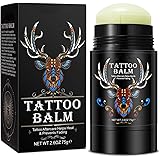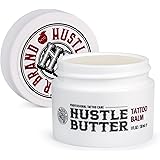Have you ever found yourself mesmerized by the graceful dance of ink on paper, watching a simple letter transform into a miniature work of art? It’s a feeling I know well, often finding profound satisfaction in observing the meticulous formation of each stroke. Just like the captivating demonstration in the video above, there’s a unique beauty in the precise movements that bring a character like the **calligraphy letter M** to life.
This visual spectacle isn’t just about drawing; it’s about understanding the rhythm, pressure, and flow inherent in the craft. While the video offers a stunning example, mastering the **letter M in calligraphy** requires breaking down its elegant structure into manageable steps. Let’s delve deeper into the art and technique behind this fascinating letter.
1. Deconstructing the Calligraphy Letter M: Strokes and Structure
The calligraphic ‘M’ is a cornerstone letter, often revealing much about a calligrapher’s control and consistency. It’s a fantastic letter for practicing foundational strokes because it incorporates both downstrokes and upstrokes, along with crucial transitions.
The Initial Downstroke
First, consider the initial vertical stem of the ‘M’. This is typically a thick downstroke, requiring firm but controlled pressure. Think of it like planting a tree; you need a solid base before you can build upwards.
The Arching Upstroke
Next comes the first arch, which is an upstroke connecting to the top of the initial stem. This stroke is usually much lighter, like a gentle whisper compared to the downstroke’s confident declaration. Aim for a graceful curve that flows naturally.
The Second Downstroke and Peak
Following the arch, a second heavy downstroke descends, forming the peak of the first hump. This stroke often mirrors the initial downstroke in width and intensity. It’s crucial for maintaining the letter’s balance and weight.
The Final Arch and Downstroke
Finally, another light upstroke guides you to the third and final peak, culminating in the last heavy downstroke. This last leg of the **calligraphy letter M** completes its distinct form, often ending with a slight flourish or a clean finish depending on the script style.
2. Essential Tools for Your Calligraphy Journey
Just as a chef needs quality ingredients, a calligrapher thrives with the right tools. While the video beautifully showcases the pen in action, understanding the impact of your equipment is vital for perfecting the **letter M calligraphy** style.
Nibs and Holders
Different nibs offer varying degrees of flexibility and line thickness. A pointed pen nib, commonly used for modern calligraphy, allows for the dramatic thick-and-thin contrast you see. Experiment with different nibs to find what feels most comfortable and gives you the desired aesthetic.
Inks and Paper
Your choice of ink and paper can dramatically affect your results. Smooth, non-bleed paper prevents feathering and allows your nib to glide effortlessly. High-quality calligraphy ink provides rich, consistent color and flows smoothly, making each stroke a joy to execute. Think of your ink and paper as the harmonious canvas and paint for your artistic expression.
3. Mastering Techniques for Perfecting Your Calligraphy Letter M
Beyond the tools, it’s the technique that truly elevates your **calligraphy letter M** from a mere mark to a satisfying artistic creation. Each tiny adjustment in your hand movement contributes to the overall elegance.
Consistent Pressure Control
One of the most critical aspects of pointed pen calligraphy is mastering pressure. Downstrokes require more pressure to create a thick line, while upstrokes need almost no pressure for a fine, delicate line. It’s a delicate dance, much like balancing a feather on your fingertip.
The Importance of Pen Angle
Maintaining a consistent pen angle throughout your strokes is key to achieving uniformity in your lettering. The angle affects the width of your lines and the overall slant of your script. Practice holding your pen at a consistent angle, typically between 45 to 55 degrees relative to your baseline.
Slow and Deliberate Practice
Calligraphy is not a race. Each stroke of the **calligraphy letter M** should be deliberate and thoughtful. Rushing often leads to shaky lines and inconsistent forms. Embrace the slowness, allowing yourself to fully connect with the movement of your hand and the flow of the ink. It’s a meditative process that rewards patience.
4. Overcoming Common Pitfalls in Letter M Calligraphy
Even seasoned calligraphers face challenges. Recognizing and addressing common issues can significantly improve your **letter M calligraphy** skills and boost your confidence.
Inconsistent Line Thickness
If your thick downstrokes aren’t uniform, or your thin upstrokes appear wobbly, it often points to inconsistent pressure. Focus on mindful pressure application, slowly transitioning between heavy and light. Imagine painting with a paintbrush, gently lifting for fine lines and pressing down for bolder strokes.
Shaky Lines and Wobbly Curves
Shaky lines can stem from gripping your pen too tightly, or not having enough support for your arm. Relax your grip and use your whole arm, not just your wrist, to guide the strokes. Think of your arm as a strong, stable bridge supporting your delicate pen movements.
Awkward Spacing and Proportions
The **calligraphy letter M** has a significant width. If your M’s feel cramped or stretched, adjust your mental grid. Practice maintaining consistent spacing between the downstrokes and the curves within the letter. Good spacing is like well-arranged furniture in a room; it makes everything feel balanced and inviting.
5. Expanding Your Calligraphy Letter M Beyond the Basics
Once you’ve mastered the fundamental strokes and forms of the **calligraphy letter M**, you can begin to explore variations and personal touches. This is where your unique style starts to emerge.
Adding Flourishes and Embellishments
Consider adding subtle flourishes to your ‘M’, perhaps a gentle curve at the end of the last downstroke or an elegant loop. These embellishments should enhance, not overpower, the letter’s inherent beauty. It’s like adding a tasteful accessory to a classic outfit.
Exploring Different Calligraphy Styles
The ‘M’ can look dramatically different across various scripts. A traditional copperplate ‘M’ will have very specific entry and exit strokes, while a modern calligraphy ‘M’ might offer more freedom in its curves and flourishes. Dive into different styles to see how the essence of the ‘M’ adapts and transforms.
6. The Meditative Power of Calligraphy Practice
There’s a reason why so many find the art of calligraphy deeply satisfying and calming. The repetitive, focused movements required for forming each **calligraphy letter M** can be incredibly therapeutic. It’s an escape from digital distractions, a return to a tactile, deliberate form of creation.
Engaging in calligraphy allows you to slow down, breathe, and concentrate solely on the present moment. Each stroke, each letter, each perfect **letter M in calligraphy** is a small victory, a testament to patience and focused effort. It’s a journey of self-discovery through ink and paper, offering a quiet space for creativity to flourish.











